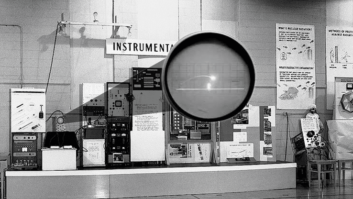ENGLEWOOD, COLO. — Hughes, an EchoStar company, plans a midyear rollout of its new do-it-yourself Sage home-automation system, which is targeted to the masses.
Sage is promoted as easy to install, set up, monitor and use, delivering a wide range of automated functions to keep the home safe, secure, and regulated to provide savings on heating and AC systems, lights, other applications and insurance premiums.
Sage integrates with a wide range of Sage-approved devices, including door and window sensors, cameras, wall switches, lights, locks and thermostats.
It is also unusual in its design and operation because it uses the TV screen as the central point of control and operation in the home, whereas other systems use just PCs or smart mobile devices running apps.
However, the system also uses iOS and Android mobile apps to operate and monitor home systems from inside and outside the home. The app monitors and manages the Sage ecosystem from anywhere through EchoStar’s Sling infrastructure.
Sage is designed to control and operate a wide range of automated control devices, although the HD security camera and automated door lock systems are expected to be the areas of primary appear.
In identifying its early target audience, Hughes said research indicates that 80 percent of the U.S. population doesn’t have a home security system. Therefore, the system is designed to send simultaneous alerts to every smartphone in a home for quick verification and response.
Sage also engages local emergency response units by quickly calling a 911 dispatcher near the residence, and creates custom automation scenarios, such as morning wakeup, daytime thermostat levels, and nighttime security check.
Hughes will formally launch Sage at the end of the second quarter, initially using its directto- consumer website, at pricing to be announced.
The company is currently exploring potential retail partners and distribution channels for the next phase of the market rollout.
Hughes also plans to work with system integrators and operators and will partner with manufacturers of compatible third-party devices.
To underscore Sage’s emphasis on the DIY installer, Hughes developed the custom light switch so that it can be easily installed through the door chime without the need to involve any high-voltage wiring.
The installer simply replaces a light switch cover plate with a supplied plate that’s designed to send an RF command signal to an RF-controlled lightbulb to wirelessly turn the light on and off or dim or brighten it.
The system was also designed to avoid some of the points of frustration and disconnects found in some competitive approaches, the company said.
“The problem with a lot of other light switching systems right now is that once you set up a lot of other home-automation light switches, users have to physically go in and use the mobile app to control it, and they can’t use the switch anymore,” said a company spokesperson. “We’ve tried to address a lot of these issues that can frustrate users.”
At the heart of the Sage system is a small hub that connects to a TV set via an HDMI port.
The hub generates an onscreen user interface and control base that helps the hub communicate with various control devices throughout the home via wireless Wi-Fi, RF, Z-Wave or Zigbee.
Hughes has also developed operational safeguards including battery backup using off-the-shelf AA NiMH batteries for power outages and USB broadband modem support for connectivity during primary broadband Internet outages
The second-quarter launch will feature a base kit that includes the Sage hub with power supply and HDMI cable, a remote control, contact sensor with battery, motion detector with six AA batteries, indoor HD security camera with power supply, and an RF-controlled lightbulb.
Sage will also sell devices separately to enable home owners to continually add-on applications to their systems over time.
Hughes designed Sage to control not only its own custom-designed control devices, such as those that ship in the base kit, but third-party devices as well, including door locks and thermostats. Hughes continues to develop additional applications and products as well to keep the system evolving.
A home Wi-Fi connection can be easily adapted to help a mobile device communicate with the system via an iOS or Android app in the home, or cellular or Wi-Fi connections outside of the home.
To control devices, the system offers RF communications to trigger various RFcontrolled smart lightbulbs, and other devices can be linked and operated via ZWave or ZigBee wireless system standards.
Hughes said Sage is unique in its design and operation through the use of the TV screen interface as the central control point. The user interface is graphically oriented to easily set up, monitor and control devices, the company said. One-click control can also be established to control multiple devices through a single trigger so that, for example, when a user returns and open the door, the system automatically turns on the lights and triggers the thermostat to raise or lower to a pre-established setting.
The HD video surveillance camera can be used with manual and event-triggered recording, with video storage located on the set-top box and in the Cloud.
When using the camera, the system presents the viewer with a picture-in-picture window on the TV screen, and the viewer can toggle between the security camera and a regular television program using a simple remote control.
Hughes developed a system for easily setting up outside cameras by using a flat power cable that can be run through a window and connected to a standard power outlet in the house, enabling the window to fully close.
The camera sends an encrypted wireless signal to the hub and then to the Internet for monitoring by a smartphone.













